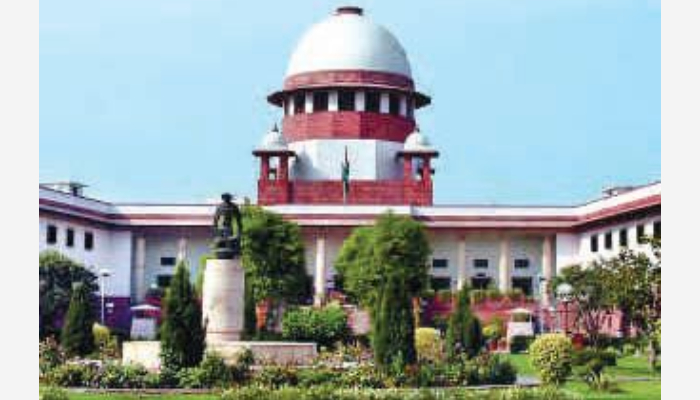
or

Supreme Court of India in Petition(s) for Special Leave to Appeal (civil) No.8519/ 2006 (Union of India Vs. State of Gujarat & Others) Dated 7.12.2009
Religion has always played a prominent role in the sovereign socialist secular democratic republic of India. But the fact remains that, citizens have used their religious freedom as a way of doing business. One of the most common illegitimate means has been setting up of religious structure on public land without any lawful authority. In legal terminology, it would be classified as encroachment upon public land or in law of torts, it would simply come under the ambit of trespass. Once such religious structure manages to get a fair number of faithful devotees, some other enhancement upon such structure is not a big surprise; thanks to the increasing turnover of “donation box”. With the passage of time, such illegal structures acquire a sort of legal sanction. The truth is that, even the public authorities do not bother to demolish them out of the fear of hurting public sentiments attached with religion. It would be fair to say that it is the fraud of the greatest magnitude under the garb of religious freedom.
India, being a secular country has a goal to promote cooperation and harmony among all the religions. But it does not follow from this that the judiciary will refrain from taking any action against this illegal encroachment on the public land in the name of religion. Recently, the Supreme Court, on 14th September 2010, issued a direction to the Centre that there shall be no fresh construction of places of worship at public places throughout the country. The restriction applies to temples, mosques, churches, gurudwaras and places of worship of all other communities, bench of Justices Dalveer Bhandari and Mukundakam Sharma said, while laying down this interim order. The bench further said that this order would be enforced till the issue relating to construction of places of worship at public places is finally resolved by the apex court. The Supreme Court also said that the fate of existing places of worship shall be dealt by the respective state governments on a “case to case” basis. The direction to the Centre came during the hearing of a petition challenging the Gujarat High Court order of May 2006, vide which the municipal corporations in the state were directed to demolish all illegal structures including places of worship on public roads.
However, the number of such unauthorized religious structures is alarming. The states that had identified the unauthorized religious structures include Madhya Pradesh, Karnataka, Gujarat, Rajasthan, Tamil Nadu, Orissa, Tripura, Himachal Pradesh, Goa, Delhi and some other smaller states. Tamil Nadu has the highest number of illegal shrines (77,453), followed by Rajasthan (58,253) and Madhya Pradesh (51,624) with such structures. Other states are Maharashtra with 17,385, Gujarat with 15,000, Karnataka with 2,814 and Delhi with 52 unauthorized religious structures. Sikkim, Mizoram and Nagaland told the court that they have no such unauthorized religious structures in public places.
The religion neutral directives issued by the Supreme Court calling for demolishing these unauthorized religious structures as soon as possible, is a welcoming change. But the implementation of this directive seems questionable. It is no secret that places of worship are the greatest source where money can be laundered without any ‘hassles’. In most cases, it is backed by some powerful politician or local goon who uses it as a front for laundering money and therefore it becomes almost impossible to keep public land out of illegal possession. Since the order of the Supreme Court is justified, legal and valid, let us hope for the quick implementation of the order as public land is not free land!
Jyotsna Sharma is pursuing her PhD in International Law from Amity University, Noida.

Lex Witness Bureau

Lex Witness Bureau

Lex Witness Bureau

For over 10 years, since its inception in 2009 as a monthly, Lex Witness has become India’s most credible platform for the legal luminaries to opine, comment and share their views. more...
Connect Us:


The Grand Masters - A Corporate Counsel Legal Best Practices Summit Series
www.grandmasters.in | 8 Years & Counting
The Real Estate & Construction Legal Summit
www.rcls.in | 8 Years & Counting
The Information Technology Legal Summit
www.itlegalsummit.com | 8 Years & Counting
The Banking & Finance Legal Summit
www.bfls.in | 8 Years & Counting
The Media, Advertising and Entertainment Legal Summit
www.maels.in | 8 Years & Counting
The Pharma Legal & Compliance Summit
www.plcs.co.in | 8 Years & Counting
We at Lex Witness strategically assist firms in reaching out to the relevant audience sets through various knowledge sharing initiatives. Here are some more info decks for you to know us better.
Copyright © 2020 Lex Witness - India's 1st Magazine on Legal & Corporate Affairs Rights of Admission Reserved